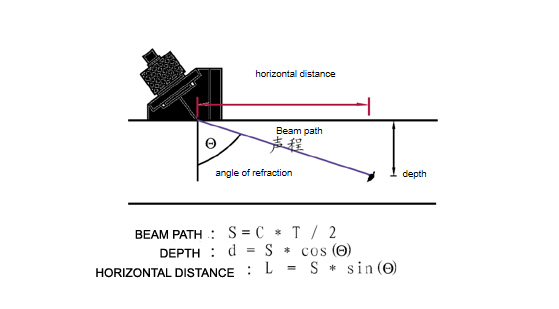Applications of Ultrasonic Flaw Detector
Probe angle and frequency for ultrasonic flaw detector, weld inspection

Probe angle and frequency for ultrasonic flaw detector, weld inspection
Probe angle
K value (tangent of the right-angled triangle)
The ultrasonic flaw detector, the sound beam should scan the entire area of the weld. The main sound beam must be perpendicular to defect as far as possible. Using proper flaw detection sensitivity
Note: When conditions permit, try to use the large K value
K value of Angle Probe for the ultrasonic flaw detector
- If the thickness of plate is 6-25mm, we recommend the K value of the probe to be 3-2(angle of refraction around 72° - 60°)
- If the thickness of plate is 25-46mm, we recommend the K value of the probe to be 2.5-1.5(angle of refraction around 68° - 56°)
- If the thickness of plate is 46-120mm, we recommend the K value of the probe to be 2-1(angle of refraction around 60° - 45°)
- If the thickness of plate is 120-400mm, we recommend the K value of the probe to be 2-1(angle of refraction around 60° - 45°)
Probe frequency
Ultrasonic Flaw detector, the detection frequency increases, the wavelength decreases, so the maximum defects that can be detected will become less. Generally? /2, in this way, that the frequency increases, it is conducive to defect.
On the other hand, the main defects inside welds are mostly to the direction of beam incidence at some angle, if the frequency is too high, the reflection directivity of the defect will also be strong, the echo will not be easily received by the probe, so the frequency should not be too high, as long as the sensitivity is proper.
GB11345 standard stipulates the inspection frequency F is generally selected in the range of 2-5MHz, it is recommended to select 2-2.5MHz nominal frequency for inspection.
0users like this.

Your cart is currently empty.